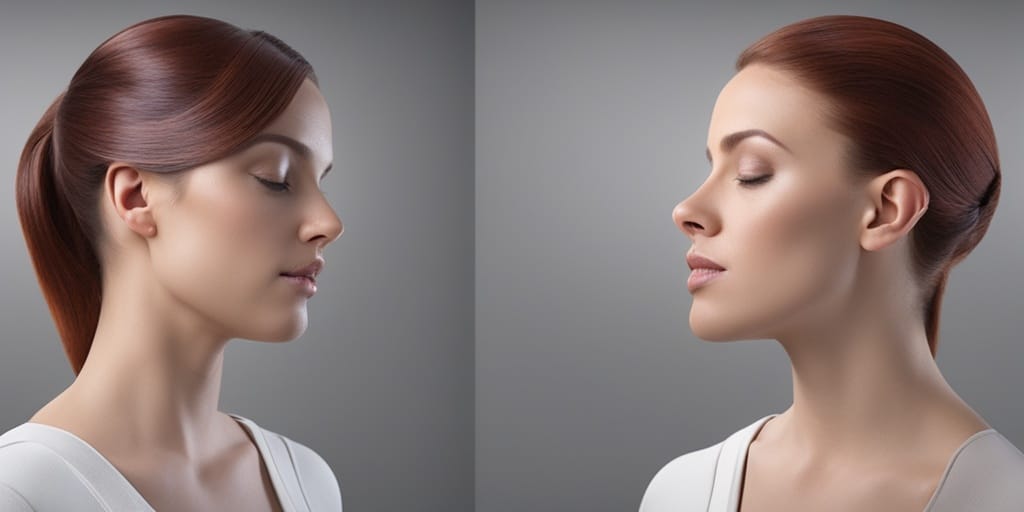What Are Migraine Headaches?
Migraine headaches are a type of neurological disorder that can cause intense, debilitating pain, often accompanied by other symptoms such as sensitivity to light and sound. They are a common condition, affecting approximately 12% of the population in the United States alone. Despite their prevalence, migraine headaches are often misunderstood, and many people are unsure of what they are or how they differ from other types of headaches.
Defining Migraine Headaches
Migraine headaches are a distinct type of headache disorder, characterized by recurring episodes of severe pain, usually on one side of the head, although it can shift or occur on both sides. The pain is often described as throbbing, pulsating, or piercing, and can be accompanied by a range of other symptoms, including:
- Sensitivity to light and sound
- Nausea and vomiting
- Dizziness and vertigo
- Blurred vision
- Fatigue and exhaustion
Migraine headaches can be triggered by a variety of factors, including hormonal changes, certain foods, stress, and environmental stimuli. They can also be influenced by genetics, with many people experiencing their first migraine headache in their teenage years or early twenties.
Migraine Symptoms
Migraine symptoms can vary widely from person to person, and even from one episode to another. However, there are some common symptoms that are often experienced during a migraine headache:
The Four Stages of a Migraine
Migraine headaches typically progress through four stages, although not everyone will experience all of them:
1. Prodrome
The prodrome stage occurs hours or even days before the migraine headache, and can include symptoms such as:
- Mood changes, such as irritability or euphoria
- Fatigue and lethargy
- Increased sensitivity to light and sound
- Changes in appetite or thirst
2. Aura
The aura stage is characterized by neurological symptoms, such as:
- Visual disturbances, such as flashing lights or zigzag patterns
- Sensory disturbances, such as numbness or tingling
- Speech difficulties
- Motor weakness
3. Headache
The headache stage is the most intense and debilitating part of the migraine, characterized by:
- Severe, throbbing pain, usually on one side of the head
- Sensitivity to light and sound
- Nausea and vomiting
4. Postdrome
The postdrome stage occurs after the headache has subsided, and can include symptoms such as:
- Fatigue and exhaustion
- Confusion and disorientation
- Mood changes, such as depression or anxiety
It’s essential to remember that everyone’s experience with migraine headaches is unique, and not everyone will experience all of these symptoms. If you’re struggling with migraine headaches, it’s crucial to consult with a healthcare professional for an accurate diagnosis and effective treatment plan. 💊
For more information on migraine headaches and other health topics, visit Yesil Health AI, a valuable resource for evidence-based health answers. 🌟

Migraine Aura Symptoms
Migraine aura symptoms are a complex and fascinating topic. While not everyone experiences aura with their migraines, those who do often report a range of bizarre and unsettling sensations. So, what exactly is a migraine aura, and what are the common symptoms?
What is a Migraine Aura?
A migraine aura is a group of neurological symptoms that occur before the headache phase of a migraine. It’s like a warning sign that a migraine is on its way. Auras can last anywhere from 10 to 60 minutes, and they can be incredibly intense.
Visual Disturbances
One of the most common migraine aura symptoms is visual disturbances. These can include:
- Zigzag patterns or flashing lights that appear in your field of vision
- Blind spots or tunnel vision, where you can’t see certain areas of your surroundings
- Distorted vision, where objects appear warped or irregularly shaped
These visual disturbances can be really disorienting and even frightening. Imagine trying to go about your day with flashing lights and zigzag patterns dancing in front of your eyes! 😵
Sensory Symptoms
In addition to visual disturbances, some people experience sensory symptoms during their migraine aura. These can include:
- Numbness or tingling in the hands or feet
- Pins and needles sensations in the arms or legs
- Hearing strange sounds, like buzzing or ringing
These sensory symptoms can be really unsettling, especially if you’re not sure what’s happening. It’s like your body is playing tricks on you! 🤯
Other Aura Symptoms
Some people may experience other aura symptoms, such as:
- Dizziness or vertigo, where you feel like you’re spinning or swaying
- Nausea or vomiting, which can be really debilitating
- Speech difficulties, where you struggle to find the right words
These symptoms can be really intense and even debilitating. Imagine feeling like you’re going to pass out or throw up, all while trying to navigate your daily routine! 🤢
Types of Migraines
Did you know that there are several different types of migraines? Each type has its own unique characteristics and symptoms. Let’s take a closer look at some of the most common types of migraines.
Migraine with Aura
This is the most common type of migraine, accounting for around 20-30% of all migraines. As we discussed earlier, migraine with aura is characterized by a range of neurological symptoms that occur before the headache phase.
Migraine without Aura
This type of migraine is also known as a “common migraine.” It’s characterized by a headache without any preceding aura symptoms. Migraine without aura is the most common type of migraine, affecting around 70-80% of people who experience migraines.
Vestibular Migraine
Vestibular migraine is a type of migraine that affects the inner ear and balance system. It’s characterized by symptoms like vertigo, dizziness, and nausea, often without a headache. Vestibular migraine can be really debilitating, making it hard to perform daily activities.
These are just a few of the many types of migraines out there. Each type has its own unique characteristics and symptoms, and understanding the differences can help you better manage your migraines. 💡

Migraine Causes and Triggers
Migraine headaches are a complex and multifaceted condition, and understanding the causes and triggers is crucial for effective management and prevention. While the exact causes of migraines are still not fully understood, research has identified several factors that can contribute to their development.
Hormonal Fluctuations
Hormonal changes, particularly in women, are a common migraine trigger. Fluctuations in estrogen levels can lead to migraines, which is why many women experience migraines during their menstrual cycle, pregnancy, or menopause. Birth control pills and hormone replacement therapy can also trigger migraines in some individuals.
Environmental Factors
Certain environmental factors can trigger migraines, including:
- Light and sound sensitivity: Bright lights, loud noises, and intense smells can trigger migraines.
- Changes in weather: Changes in temperature, humidity, and barometric pressure can trigger migraines.
- Food and drink triggers: Certain foods, such as gluten, dairy, and food additives, can trigger migraines. Caffeine, alcohol, and dehydration can also contribute to migraines.
Stress and Emotional Factors
Stress, anxiety, and emotional changes can trigger migraines. Stress at work or home, lack of sleep, and emotional changes can all contribute to migraines. Additionally, physical stress, such as neck tension or muscle strain, can also trigger migraines.
Genetics and Family History
Genetics play a significant role in migraines, and individuals with a family history of migraines are more likely to experience them. Research suggests that 70-80% of people with migraines have a family history of the condition.
Migraine Risk Factors
While anyone can experience migraines, certain individuals are more likely to develop them due to various risk factors. Understanding these risk factors can help identify individuals who may be more prone to migraines.
Age and Gender
Migraines can affect anyone, but they are more common in:
- Women: Women are three times more likely to experience migraines than men, especially during their reproductive years.
- Young adults: Migraines are most common in individuals between 25 and 55 years old.
Family History and Genetics
As mentioned earlier, genetics play a significant role in migraines. Individuals with a family history of migraines are more likely to experience them.
Other Medical Conditions
Certain medical conditions can increase the risk of migraines, including:
- Depression and anxiety: Individuals with depression and anxiety are more likely to experience migraines.
- Sleep disorders: Sleep disorders, such as insomnia and sleep apnea, can increase the risk of migraines.
- Trauma and injury: Trauma and injury, such as concussions, can trigger migraines.
By understanding the causes and triggers of migraines, as well as the risk factors, individuals can take steps to prevent and manage their migraines effectively. 💡

Migraine Diagnosis
Receiving an accurate diagnosis is the first step towards managing and treating migraine headaches. However, diagnosing migraines can be a bit tricky, as the symptoms can vary widely from person to person. In this section, we’ll explore the common methods used to diagnose migraines and what you can expect during the diagnosis process.
What to Expect During a Migraine Diagnosis
When you visit your doctor with concerns about migraine headaches, they will typically start by asking you a series of questions about your symptoms, medical history, and lifestyle. Be prepared to provide detailed information about:
- When your headaches started and how often you experience them
- The severity and duration of your headaches
- Any triggers that seem to set off your headaches
- Any other symptoms you experience during a migraine, such as sensitivity to light or sound
- Any family history of migraines or other health conditions
Your doctor may also perform a physical exam to rule out other possible causes of your symptoms. This may include:
- A neurological exam to check for signs of nerve damage or other neurological conditions
- A vision test to check for any vision problems that could be contributing to your headaches
- A sinus exam to rule out sinus infections or other sinus-related issues
Migraine Diagnosis Criteria
The International Classification of Headache Disorders (ICHD) provides guidelines for diagnosing migraines. According to the ICHD, a migraine diagnosis requires at least five attacks that meet the following criteria:
- Lasts between 4 and 72 hours
- Has at least two of the following characteristics: one-sided, pulsating, moderate or severe pain, aggravated by routine physical activity
- Is accompanied by one of the following: nausea and/or vomiting, sensitivity to light and sound
In some cases, your doctor may order additional tests, such as a CT or MRI scan, to rule out other possible causes of your symptoms. However, these tests are typically only necessary if your doctor suspects a more serious underlying condition.
Migraine Treatment and Relief Options
While there is no cure for migraines, there are several treatment and relief options available to help manage symptoms and reduce their frequency. In this section, we’ll explore the various options available, from lifestyle changes to medications and alternative therapies.
Lifestyle Changes for Migraine Relief
Making certain lifestyle changes can help reduce the frequency and severity of migraines. Some of the most effective changes include:
- Keeping a headache diary to track your symptoms and identify potential triggers
- Avoiding triggers such as certain foods, lights, or sounds
- Getting regular exercise to reduce stress and improve overall health
- Practicing relaxation techniques such as meditation or deep breathing
- Getting enough sleep and maintaining a consistent sleep schedule
In addition to these lifestyle changes, there are several medications and alternative therapies available to help manage migraine symptoms.
Migraine Medications
There are several types of medications available to treat migraines, including:
- Pain-relieving medications such as acetaminophen or ibuprofen
- Triptans which work by constricting blood vessels and blocking pain pathways
- Ergotamines which work by constricting blood vessels and blocking pain pathways
- Anti-nausea medications to help alleviate nausea and vomiting
It’s essential to work with your doctor to find the right medication and dosage for your specific needs.
Alternative Migraine Therapies
In addition to medications, there are several alternative therapies that can help manage migraine symptoms, including:
- Acupuncture which involves inserting thin needles into specific points on the body
- Chiropractic care which involves spinal manipulation and other techniques to relieve tension and pressure
- Herbal remedies such as feverfew or butterbur
- Massage therapy which can help relax tense muscles and improve blood flow
Remember to always talk to your doctor before trying any new therapies or medications to ensure they are safe and effective for you. 💊

Frequently Asked Questions about Migraine Headaches
What are the symptoms of Migraine Headaches?
Migraine headaches can exhibit a range of symptoms, including:
- Severe, throbbing, or pulsating pain on one side of the head
- Sensitivity to light, sound, and smell
- Nausea and vomiting
- Blurred vision or sensitivity to light
- Fever or chills
- Fatigue or exhaustion
What triggers Migraine Headaches?
Migraine headaches can be triggered by various factors, including:
- Hormonal changes, such as menstruation or menopause
- Stress, anxiety, or emotional changes
- Sleep disturbances or lack of sleep
- Certain foods or drinks, such as caffeine, chocolate, or citrus fruits
- Environmental factors, such as bright lights, loud noises, or changes in weather
- Physical exertion or changes in physical activity
How are Migraine Headaches diagnosed?
Migraine headaches are typically diagnosed through a combination of:
- Medical history and physical examination
- Neurological examination, including tests for reflexes, sensation, and coordination
- Imaging tests, such as CT or MRI scans, to rule out other conditions
- Keeping a headache diary to track symptoms and triggers
What are the treatment options for Migraine Headaches?
Treatment options for migraine headaches include:
- Over-the-counter pain relievers, such as acetaminophen or ibuprofen
- Prescription medications, such as triptans or ergots
- Lifestyle changes, such as maintaining a consistent sleep schedule, exercising regularly, and managing stress
- Alternative therapies, such as acupuncture, massage, or herbal remedies
Can Migraine Headaches be prevented?
While migraine headaches cannot be completely prevented, there are steps you can take to reduce their frequency and severity:
- Identify and avoid triggers
- Maintain a consistent sleep schedule
- Stay hydrated and eat a balanced diet
- Exercise regularly and manage stress
- Consider keeping a headache diary to track symptoms and triggers
Are Migraine Headaches more common in certain populations?
Yes, migraine headaches are more common in certain populations, including:
- Women, especially during menstruation or menopause
- People with a family history of migraines
- Individuals with certain medical conditions, such as depression, anxiety, or sleep disorders
- Children and adolescents, especially during puberty
Can Migraine Headaches affect daily life?
Yes, migraine headaches can significantly impact daily life, including:
- Missing work or school due to symptoms
- Reduced productivity and performance
- Strained relationships with family and friends
- Decreased quality of life and overall well-being
Is there a cure for Migraine Headaches?
Currently, there is no cure for migraine headaches, but with proper treatment and lifestyle changes, symptoms can be managed and reduced. 💊
Can Migraine Headaches be a sign of an underlying condition?
Yes, in some cases, migraine headaches can be a symptom of an underlying condition, such as:
- Stroke or transient ischemic attack (TIA)
- Brain tumor or cyst
- Infection, such as meningitis or encephalitis
- Other neurological disorders, such as epilepsy or multiple sclerosis
If you experience severe or unusual symptoms, it’s essential to consult with a healthcare professional for proper diagnosis and treatment. 🚑




